Cosmos tour of Central Europe 2012
Sunday 30 September. Oslo to Frankfurt.
We flew to Frankfurt, Germany from the very busy Oslo airport. After settling in at the Holiday Inn we went for a walk down to the Main River in central Frankfurt. There were lots of people out enjoying the autumn sunshine.
.jpg?timestamp=1352514930692)
Frankfurt
In the evening we met our Tour Director, Tunde and driver Giovanni, and the other members of our group. There are 37 on the tour from USA, Australia, New Zealand, UK, Singapore, Philippines. We will be visiting Germany, Poland, Slovakia, Hungary, Czech Republic and Austria. Should be good!
Monday 1 October. To Berlin.
We travelled all the way on the autobahn (no speed limits!). Our first stop was at Eisenach, the border between West and East Germany that was opened in 1989 when Germany was re-unified. We noticed that on parts that were on West Germany there are lots of villages surrounded by family owned farms. North of the old iron curtain, though, in what was East Germany, the farms are large with few towns (reflecting the communism approach of ownership).
We stopped at the baroque town Weimar, (known as the Athens of Germany) which was once the intellectual capital of Germany, hosting famous people like Luther, Bach, Lizst, and Goethe. From there it was on to Berlin, the capital of Germany, a city of 3.4 million people. We settled in to the Abba Hotel, situated close to the main shopping street.
.jpg?timestamp=1352514771293)
.jpg?timestamp=1352514825795)
Weimar
Tuesday 2 October. City tour of Berlin.
Berlin was pretty much demolished in WW2 so many of the buildings are quite modern and there are no high-rises. You can still see evidence of re-construction everywhere. An unusual feature is that the water supply pipes are above ground because the water table is so high. The eastern part is much more grey and drab than the western part but the city is gradually becoming one. Some historical buildings survived the bombing and others have been restored with their original facades. The Berlin Wall was built on the 13 August 1961, more or less overnight. It went for 155km and totally isolated West Berlin. Checkpoint Charlie was one of the checkpoints between the 4 quarters set up by the victors in WW2: British, French, Russian, American. It became the focal point of the cold war with many demonstrations and confrontations between US and Russian tanks. During Stalin's red terror life was totally regulated in the east so many tried to escape over the wall but there were only 5075 successful escapes. On 9 November 1989 the GDR announced that people could freely apply to cross to the west and on 22 June 1990 the Berlin Wall was demolished. Only three small parts of the wall remain (and the rest is available for purchase as tourist souvenirs!).

.jpg?timestamp=1352515322805)
.jpg?timestamp=1352515910225)
Berlin Wall and Checkpoint Charlie
On our city tour we saw the main sights including the Kurfurstendamm shopping street, Tiergarten Park, the Berlin Wall and Checkpoint Charlie, the Gestapo headquarters, Bebelplatz where Jewish books were burned, the Reichstag government area, Victory column, the French and German cathedrals, the Memorial Church, Museum Island, the Charlottenburg Palace, the River Spree, the Royal Boulevard, and the Brandenburg Gate. Built in 1791 the gate was one of the original gates to the city and has become the landmark symbol of the divided city of Berlin.
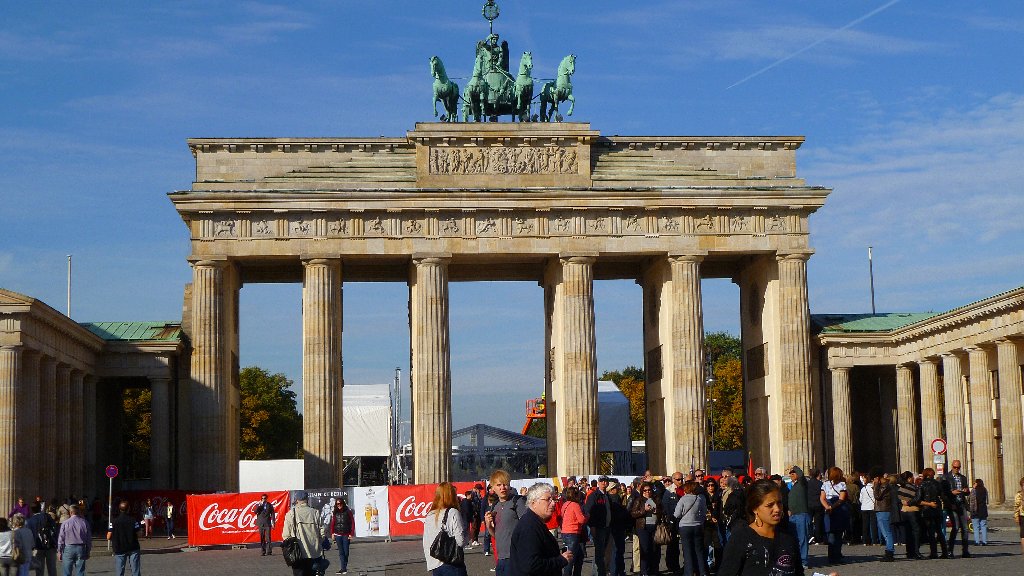
Brandenburg Gate .jpg?timestamp=1352515663811)
In the afternoon we wandered along the main shopping street and then over to the Victory column and back through Tiergarten Park. A good walk!
Wednesday 3 October. To Warsaw, Poland.
Poland is very flat. The main foods eaten here are pork, potato and cabbage and vodka is always drunk. The capital is Warszawa (Warsaw) with a population of 1.8 million, (but there are more Poles than this living in Chicago!). Poland has been occupied many times by Sweden, Prussia, Austria, and Russia. In WW2 Poland was occupied by Germany and Russia and the Polish population was pretty much eliminated. Jews were put in ghettos and then sent to concentration camps and Poles were forced into labour camps in Germany. After the war Stalin 'liberated' Poland and brought in communism with even more terror. There was a big uprising against communism in 1957 and then again under Lech Walensa and the country has gradually become more free. After 1989 and the breakdown of communism Poland has began a major rebuilding programme (starting with McDonalds!). The Polish people's biggest strength has come from the church with almost all of the population practising Catholics. (Pope John Paul 11 was Polish). Now Poland is part of EU but doesn't use the Euro.
We drove east through Poznan to Warsaw. Poznan is on old market town and was briefly the capital of Poland. A legend here is that the town was saved by two billy goats who were fighting and this alerted the townspeople to a fire. Poznan has a lovely old church. 95% of Polish people are Catholics.
.jpg?timestamp=1354748818602)
.jpg?timestamp=1354748933761)
Poznan
Thursday 4 October. Warsaw.
We had a city tour of Warsaw and found that pretty well everything in the city relates back to its destruction in WW2 and subsequent communist takeover. What has been achieved in rebuilding Warsaw since 1945 is quite remarkable. 80% of the population was killed in the war and 85% of the buildings destroyed. Many of the old buildings have been reconstructed just as they were before the war based on drawings and paintings. We visited the old town and market square and watched a film showing the terrible things that were done to the Jews in the ghetto, and the bombing of the city in 1944 and then its rebuilding. Over 400,000 Jews were sent to the concentration camp at Treblinka from Warsaw and there is now a stark memorial of this where the ghetto was situated, and another one for the ill-fated Warsaw uprising.
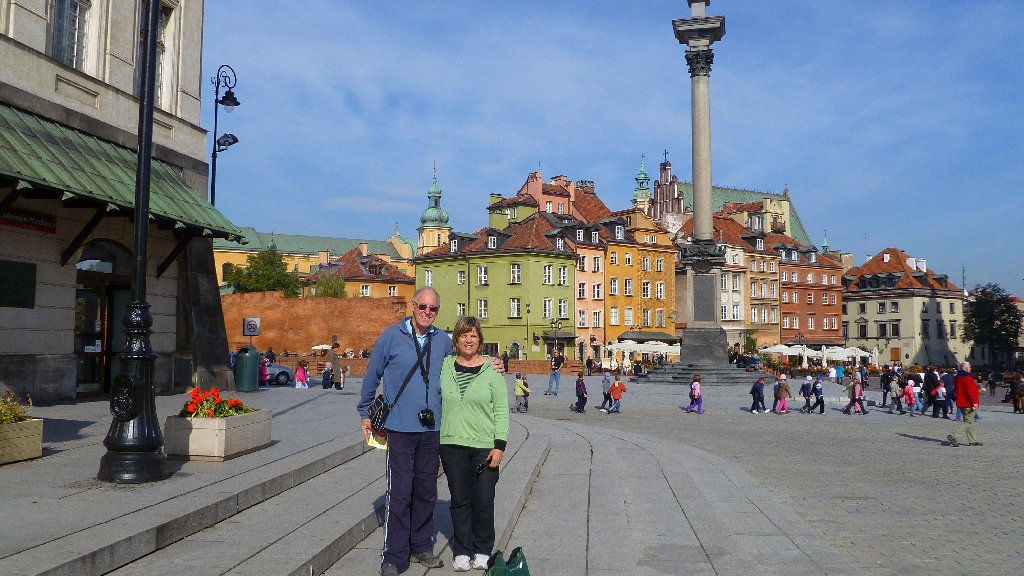
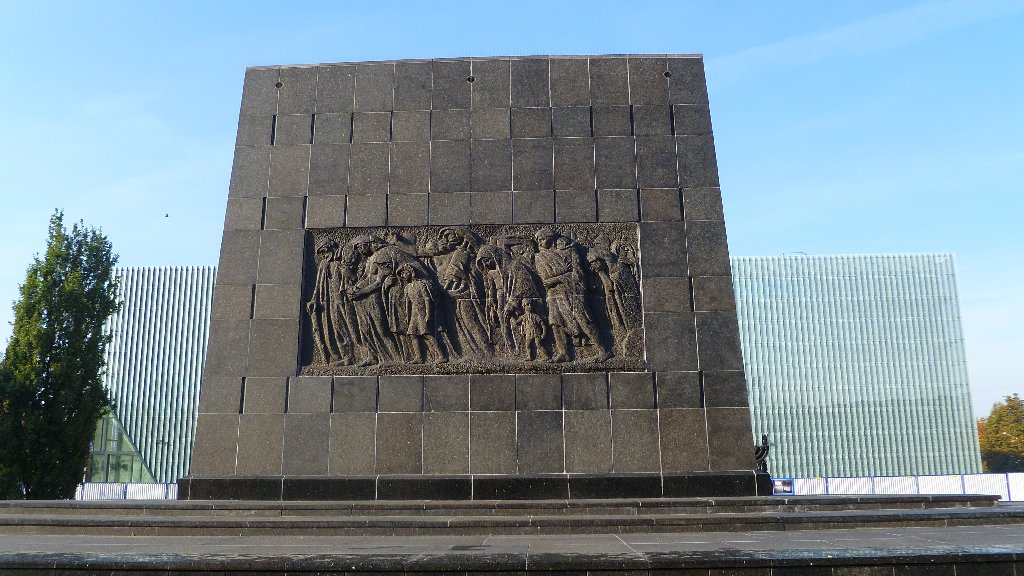
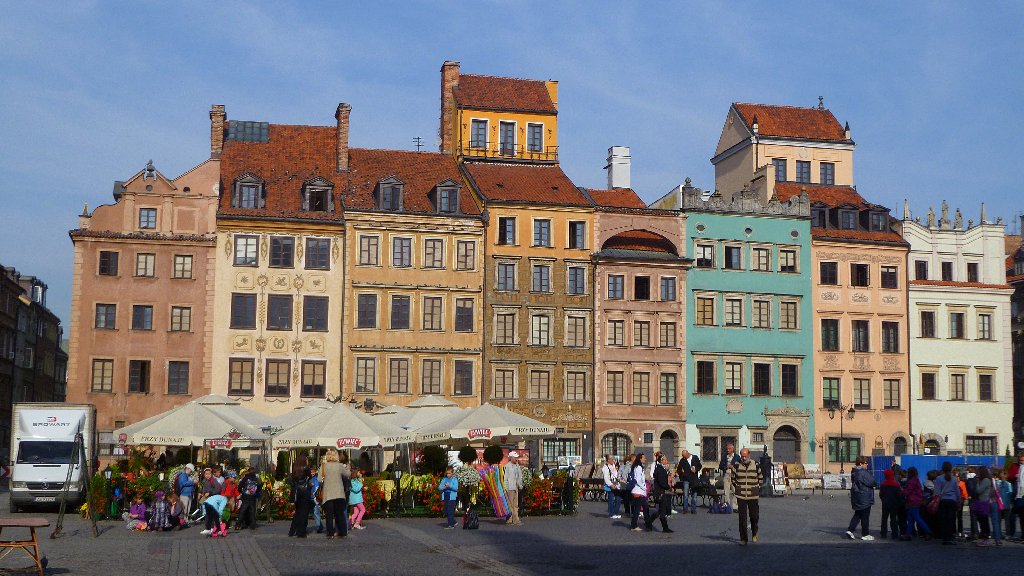
Warsaw's Old Town, Jewish Ghetto memorial, and Market Square
On our tour we also saw Constitution Square (built in 1952 to celebrate Stalin's new communist constitution), Lazienki Gardens with a memorial to the composer Chopin and the summer palace of the last King of Poland - the 'Palace on the water', the Royal Castle, the Presidential Palace, the old communist headquarters (now the headquarters for Ferrari!), and many large churches. The contrast between the old communist buildings (done in socialist realism style of drab, grey concrete) and the reconstructed old buildings was most apparent.
Since 1989 Warsaw has been rebuilding and modernising. Many of the old communist buildings remain giving it a rather drab appearance but the willingness of the Polish people to forget their awful past and forge a bright future is clearly seen. Education is free and Poland has more students than anywhere so the future is bright.
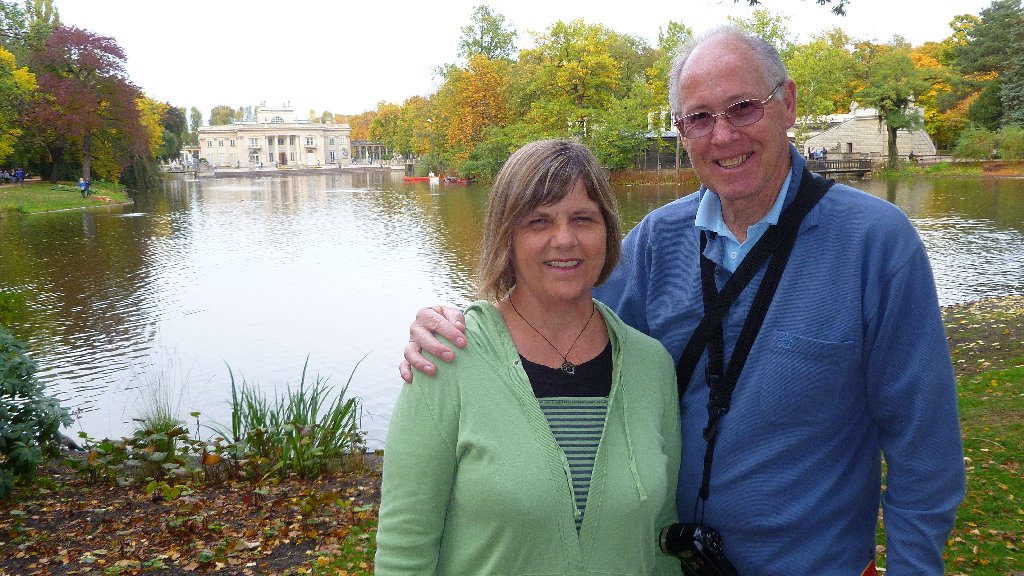
Palace on the water in Lazienki Gardens
Friday 5 October. Warsaw to Krakow via Auschwitz.
On the way to Krakow we stopped at the Jasna Gora Monastery (13th Century) to see the Black Madonna. This is the main pilgrimage site in Poland, and one of the top five in the world. The Black Madonna is a small painting of the Madonna with the child Jesus in her arms. It was supposed to have been painted by St Luke on a wood panel in a house in Nazareth. It was moved to Constantinople and then on to Jasna Gora in the 14th century. The legend is that in 1430 Czech robbers cut Mary's face on the icon. The monks painted over the cut and when they came back next day they found it was bleeding. Jasna Gora is now seen as a place of miracles and is the spiritual capital of Poland. Four million pilgrims visit every year.
.jpg?timestamp=1354843728433)
.jpg?timestamp=1354843838699)
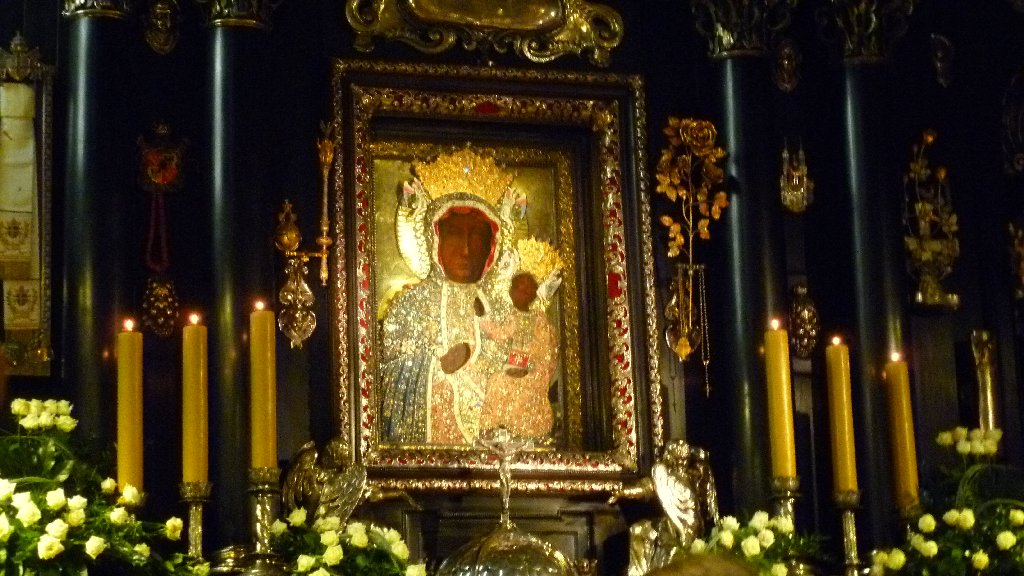
Jasna Gora Monastery and the Black Madonna
Next we visited the Auschwitz and Birkenau concentration camps - more reminders of atrocities carried out in WW2. These were the biggest Nazi concentration camps and could exterminate 64,000 people each day. Overall about 3 million were killed here. Initially leaders, political enemies, Poles, intellectuals and gypsies were killed then Hitler began his plan to exterminate all of the Jews in Europe. They were collected by train and transported here after being told they were going to a work camp. We saw the train lines, and barracks of Birkenau where those fit to work were housed, then at Auschwitz we saw the whole camp. At the entrance to Auschwitz there is a sign "work sets you free". People were told they were going to work camps so they could have a better life! The camp was very well organised to carry out its role mass extermination. We saw the places where people were sorted, stripped, gassed, processed and burnt. Also where anything useful was collected for use or sale; where torture and punishment took place, and where experiments were carried out in an attempt to get a purer German race. The camps are in pretty much the same condition as they were when the war ended in 1945. This was requested by the survivors so that they would be a permanent reminder of how inhumane people can be, and of one of history's darkest hours. Hopefully this kind of holocaust will never happen again. Our tour bus was quite sombre as we headed for Krakow.
.jpg?timestamp=1354844090304)

Birkenau and Auschwitz
.jpg?timestamp=1354844191337)
Saturday 6 October. Krakow.
Krakow is quite different to Warsaw because it wasn't bombed in WW2 so hasn't needed to be re-constructed. It is young, vibrant and filled with 200,000 students. Between 1036-1609 Krakow was the capital of Poland. Over the years it was occupied by Sweden, Prussia and Austria. After WW1 there was much growth and renovation. At the beginning of WW2 the Nazis invaded Poland and set up their headquarters in Wawel castle. They also took over Polish and Jewish businesses which explains why the city wasn't destroyed. On our city tour we started in the Jewish quarter where Schindlers List was filmed. At the beginning of WW2 there were about 70,000 Jews in Krakow and they were herded into a ghetto before being sent to the concentration camps. Very few Jews live there today.
.jpg?timestamp=1354844736066)
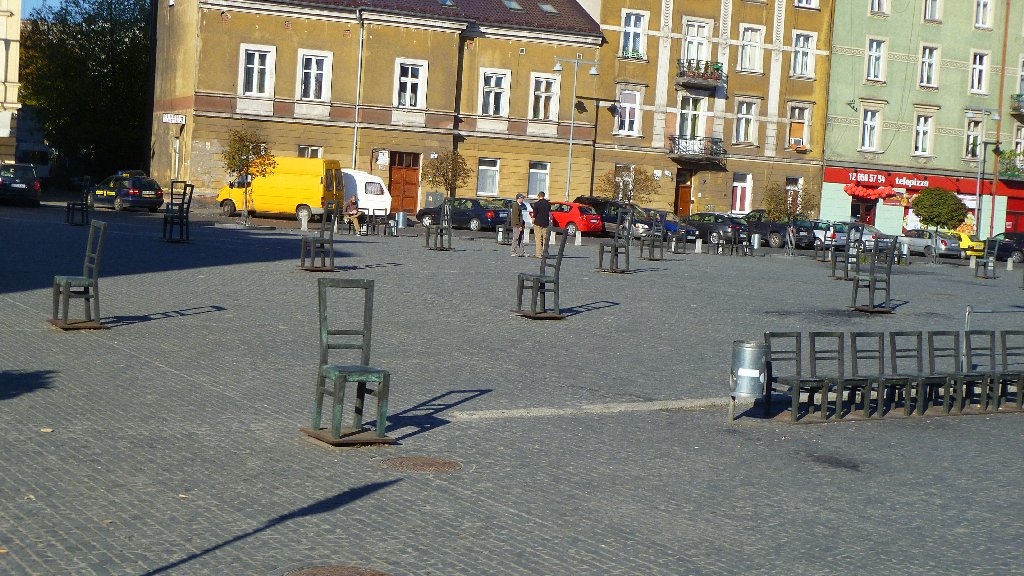
Jewish Ghetto and memorial in Krakow
Next we visited Wawel Hill - a 50m-high rock above the Vistula River. We walked through the magnificent Krakow Cathedral which where John Paul 11 was Bishop before he became the Pope. It is part of Wawel Castle which is where the old Polish kings lived and which became the Nazi Headquarters in WW2. The building is a mixture of Medieval, Romanesque, Renaissance, and Baroque style. We then walked up the Royal way past many lovely churches to Market Square in the Old Town. this is the largest medieval market on Europe and there were thousands in the square enjoying the sunshine. St. Mary’s Basilica sits in the square and is notable for its bugler and for its magnificent altar and paintings. The Cloth Hall in the market square is a good place to buy amber- a specialty of this area.
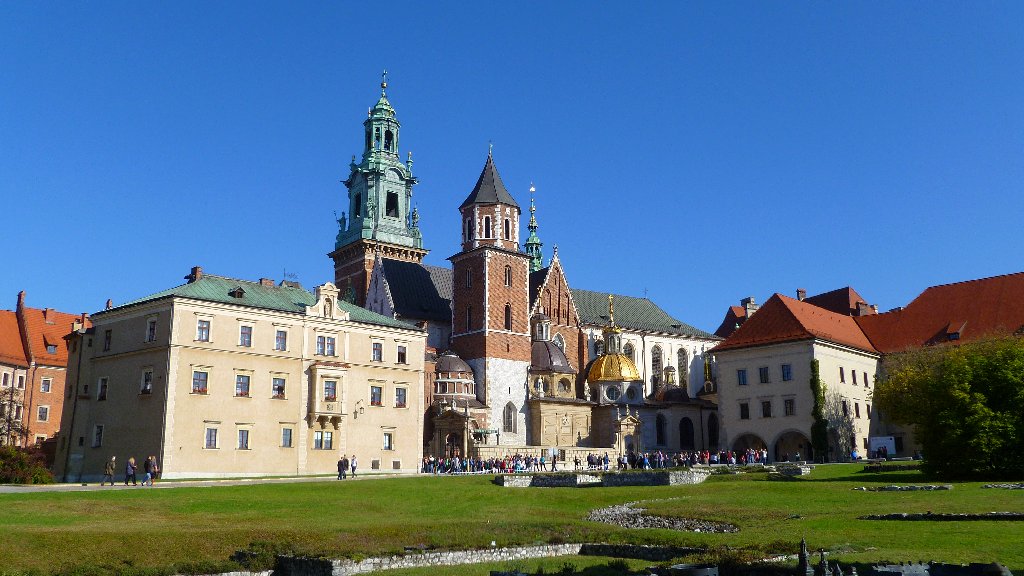
Wawel Castle, Krakow
.jpg?timestamp=1354844904054)
Market Square, Krakow
In the afternoon we visited the Wieliczka Salt mine, another UNESCO World Heritage site. It began in the 1200s and is still functioning today. We travelled 130 metres underground, and there was still 200 metres below us. We walked through 2 of the 200km in the mine and saw how it was mined in the old days (using horses that stayed in the mine for 18 years). The miners have created statues and carvings, sculptures, chapels, lakes and an amazing underground church, all nicely lit. In medieval times salt had the same value as silver and an enormous amount of salt has already been removed from the mine. You can see why this is one of Poland's top tourist attractions.
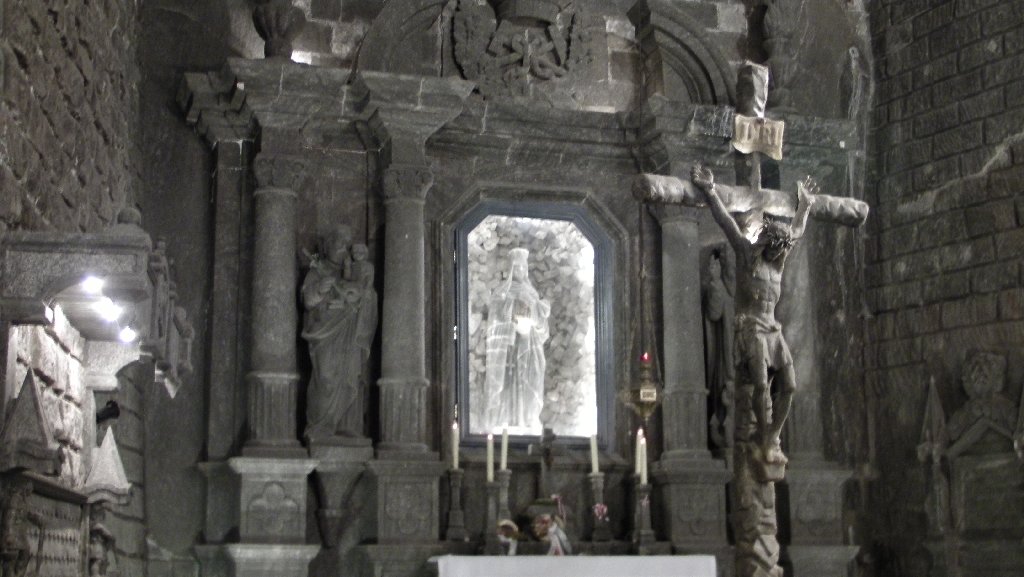
Chapel in salt mine - everything made of salt
Poland has had a terrible history but since 1989 has been able to rebuild their nation. Today it feels positive and prosperous. Hopefully it will be able stay that way.
Sunday 7 October. To Budapest, Hungary.
We travelled through Slovakia, part of what was Czechoslovakia under communism, into Magyar - Hungary, and the historic city of Budapest. Hungary lost 2/3 of its land in WW1 and aligned with Hitler in WW2 500,000 Jews were deported and killed in 1944. After the war Hungary was 'liberated' by Stalin and became communist, controlled by Soviet Russia. Again there was much terror and forced labour camps. Hungary was the food kitchen of the Soviet bloc but food for the people was limited and controlled so there was much smuggling in of western goods. They survived this oppression by means of wine and humour. The revolution against communism started in 1956 but the initial uprising was squashed by Soviet tanks. Hungary became free and democratic in 1989. Now there are 10 million people and another 10 million in other parts of the world. Hungary is in the EU but doesn't use the euro. Budapest has many magnificent buildings overlooking the Danube River. We took a cruise to see these buildings illuminated at night. Magnificent!
Monday 8 October. Budapest.
Budapest is a city of 2 million people. It is divided by the Danube into two parts, Buda and Pest. It is notable for its many spas. On our city tour we saw Parliament square where the revolution against communism began; Octagon square, the house of terror used by Nazis during the war; many lovely palaces (large buildings) on the avenue; City Park with its many spas; and the magnificent Heroes Square. Here there are many statues of heroes from Hungarian history, watched over by the arch-angel Gabrielle. The square is flanked by the Museum of Fine Arts and the Palace of Arts.
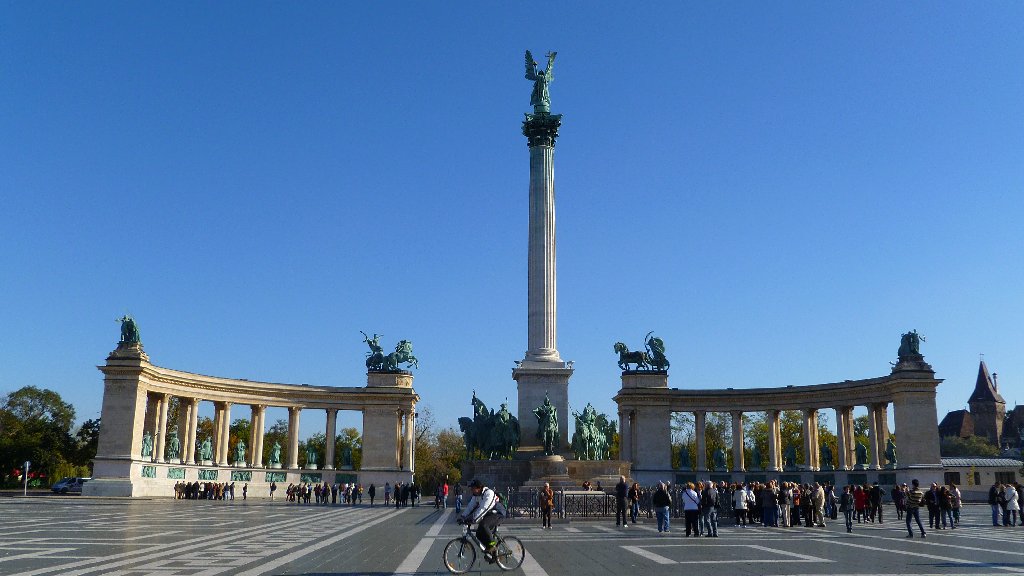
Heroes Square
The Great avenue leads from City Park to the Chain Bridge via Octagon Square, thr theatre district, the Royal Opera House, St Stephens church, and the Jewish synagogue. The view across the Danube to Buda Castle and the Royal Palace is stunning. We got this view from the Buda side (from within the castle complex) and from the Pest side - looking up to the castle over the Danube. We walked through Vaci Street and saw the markets before heading back to the hotel over the chain bridge. This bridge is iconic for Budapest, joining both sides of the river beneath the castle. It is lit up at night and helps create the ethereal beauty we saw on our Danube cruise last night. In the evening we went to a dinner and show featuring Hungarian food, (goulash), music and dance (including a performance by Tunde, our Tour Director).
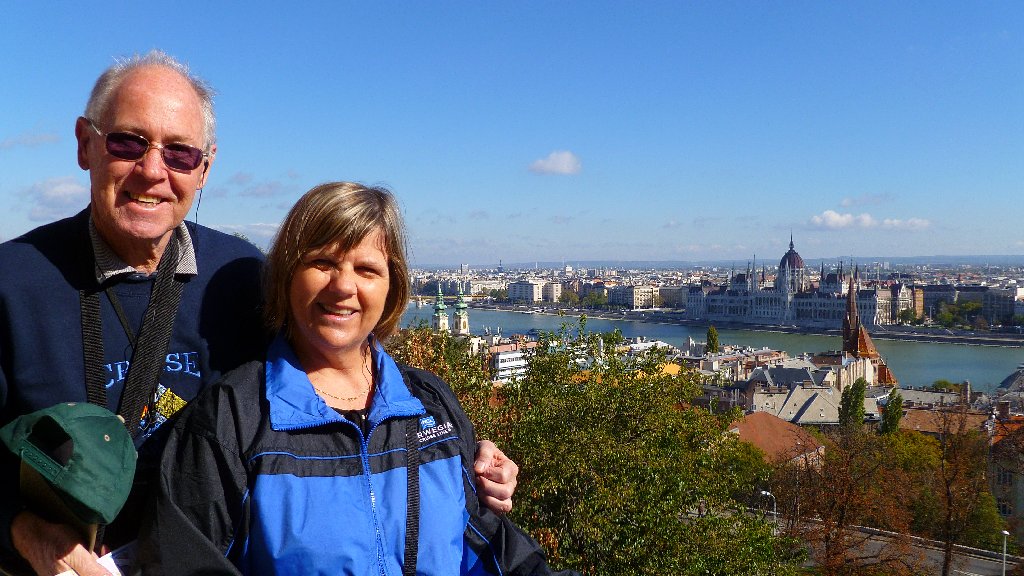
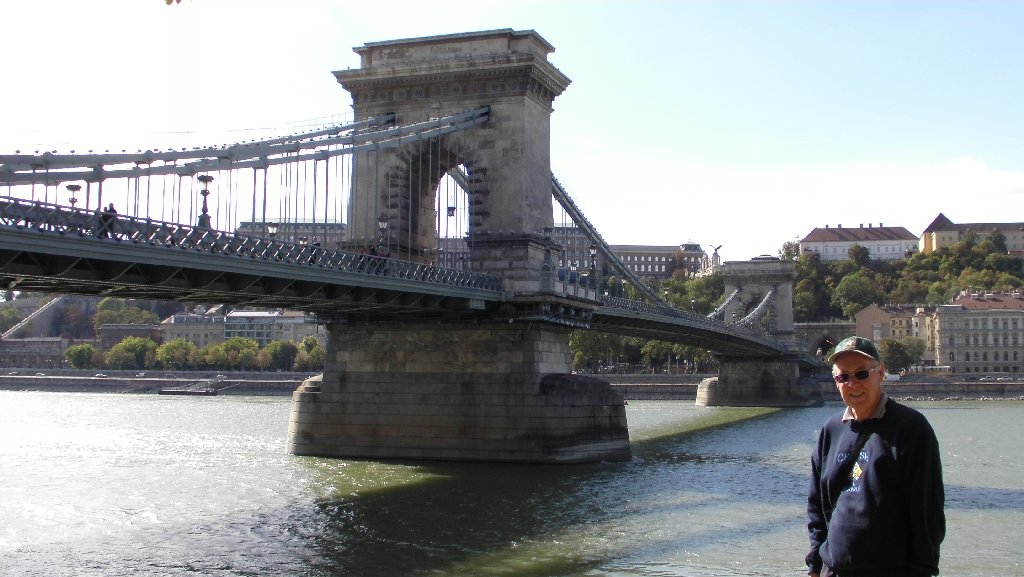
Chain Bridge

Danube River and Parliament, from Buda Castle, Budapest
Tuesday 9 October. To Vienna, Austria.
We crossed the old 'iron curtain' from Hungary and travelled to Vienna, the capital of Austria, a city of 1.6 million people. Along the way we saw countless wind turbines being used to generate electricity. In history Austria was a powerful republic with an extensive empire. Her territory was significantly reduced after the loss of WW1. She aligned with Germany in WW2, but many left (as shown in The Sound of Music). After liberation at the end of WW2 Austria became neutral and is again a republic.
On our city tour we saw the Danube Canal; the ring road enclosing historical part of the city; City Park with a golden statue of Strauss; Kursalon palace, Karl's church; the State Opera House; many beautiful palaces and museums; the Rose Garden, Parliament, City Hall, the Hofburg Palace where the Emperors lived, and St Stephen's Church. Many of the buildings are made of sandstone and go black with the pollution in the air. They need cleaning again after about 11 years. The buildings of Vienna are simply magnificent! In the evening we went to a concert in the Kursalon Palace. The music was by Strauss and Mozart and included waltzes, polkas, arias and duets. It was outstanding - truly a concert to remember - set in an amazing palace in an amazing city.
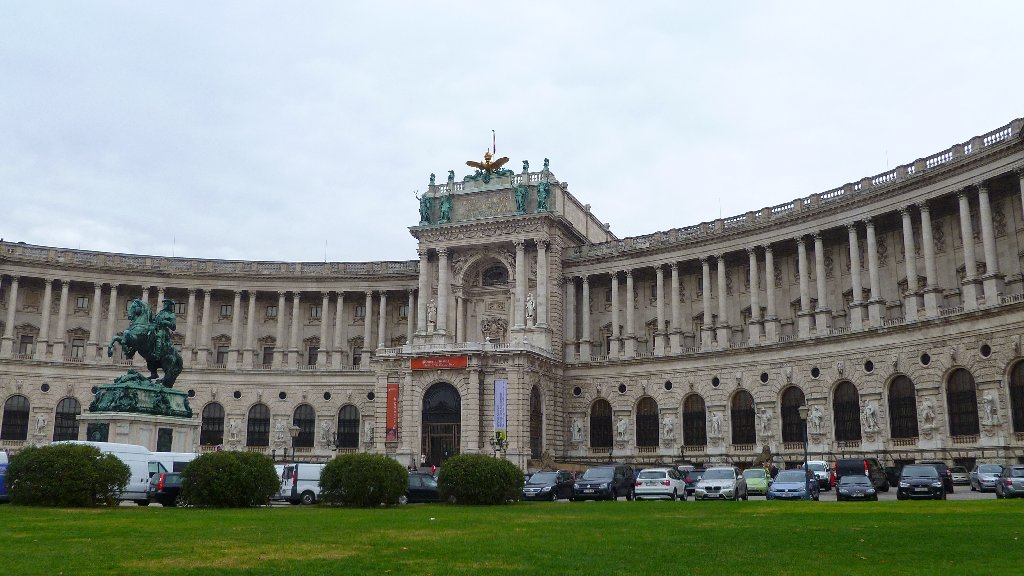
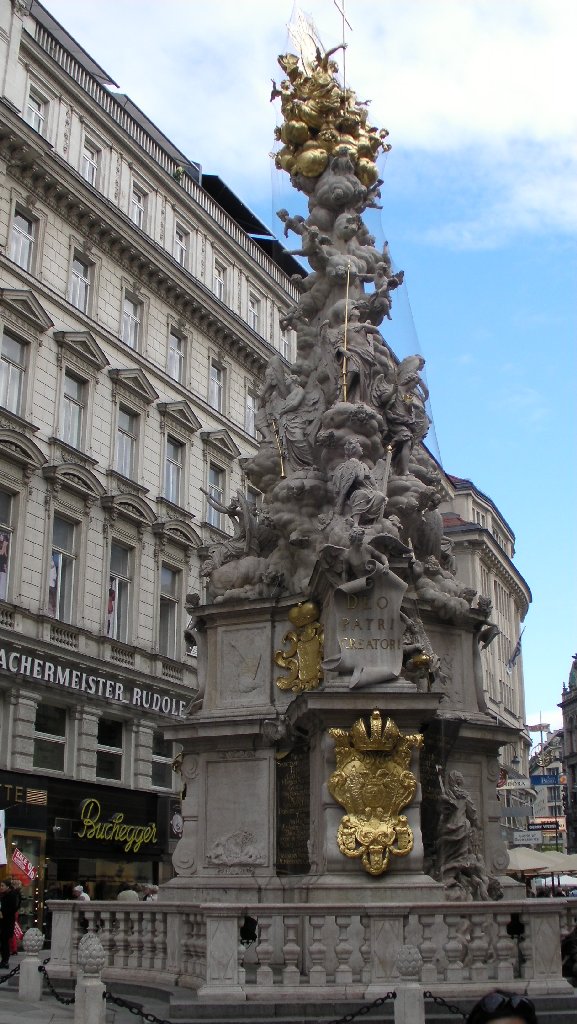
.jpg?timestamp=1355170010997)
.jpg?timestamp=1355170174658)
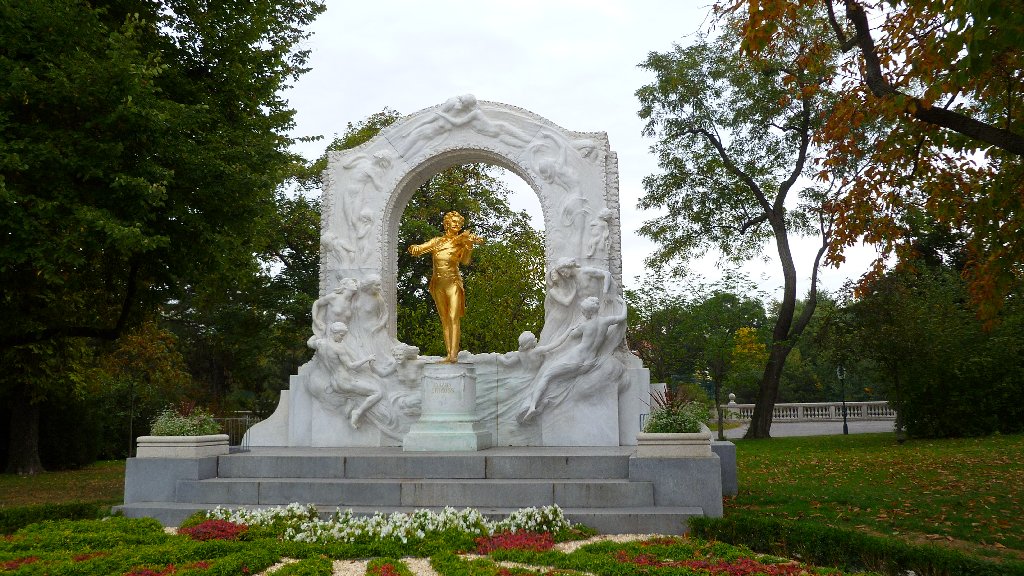
.jpg?timestamp=1355170243578)
Vienna, Austria
Wednesday 10 October. To Prague.
After a much needed rest we headed north to Prague in the Czech Republic, travelling through Moravia and Bohemia. The Czech Republic has a population of 10 million and is noted for Skoda cars, beer and dumplings. This area was part of Austria till WW1. Czechoslovakia was created in 1918 and lasted till 1983. It was occupied by Germany in WW2 and became communist afterwards till 1989 - a terrible period that still continues to influence attitudes today. Alexander Dubcek led a gradual revolution against communism. In 1993 Czechoslovakia separated into the Czech Republic and Slovakia. Prague is the capital and has a population of 1.3 million.
Thursday 11 October, Prague.
On our city tour we saw the main historic places and monuments in the Old Town and in the Jewish Quarter of Prague. We saw the gothic Tyn Church, the picturesque Ungelt, the Carolinum - the oldest University in Central Europe, the Rudolfinum arts centre, the Klementinum Theatre and the Astronomical clock in the medieval market square. Almost all of the old buildings in Prague survived WW2. That's because Hitler wanted to use Prague as a historical 'trophy' of his victory over the Jews. He collected gathered many valuable Jewish items together and sent them to Prague. At the end of the war he didn't have time to destroy them so now the Jewish Museum contains the greatest collection of Jewish cultural items anywhere. In the Jewish Quarter we saw two very old synagogues and the Jewish cemetery, but, again, were saddened to hear that 70,000 Jews from here lost their lives in the war.
In the afternoon we visited Prague Castle, the biggest medieval castle complex in the world. A cruise on the Vlatava River shows how the castle stands high above Lesser Town and the river and looks over to the Old Town. We went on a walking tour through the castle complex crossing the river on the Charles Bridge - (founded by Charles IV. in the 14th century) then climbing up past St. Nicholas Church to the castle. Prague Castle was the residence of Czech rulers from the 9th century. It contains many palaces, churches, gardens and squares but is dominated by the enormous St Vitus Cathedral. The views over the city from the castle are fantastic! This tour has highlighted some wonderful old European cities, and Prague stands out as one of the most beautiful.
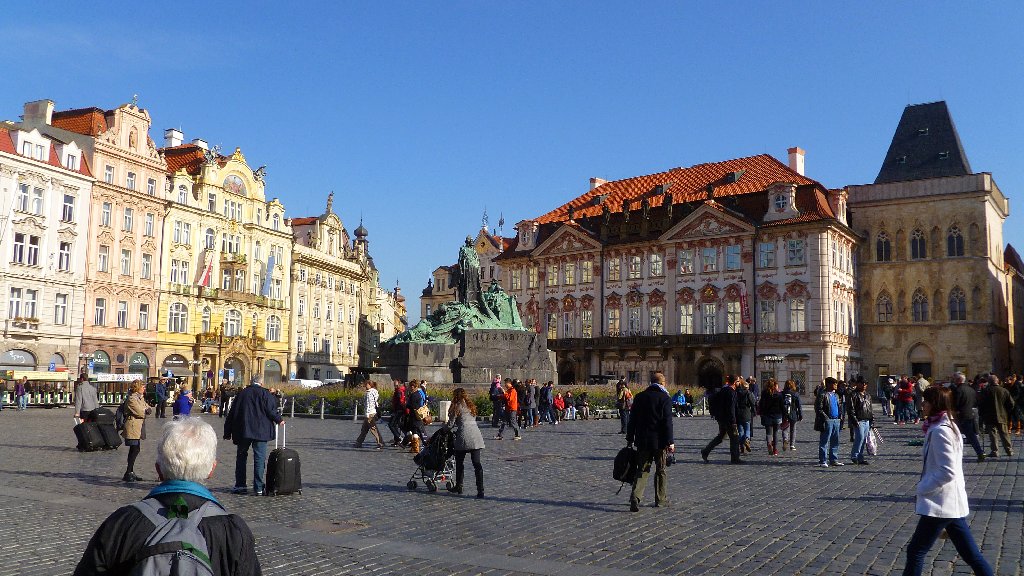

Prague Market Square and Astronomical clock

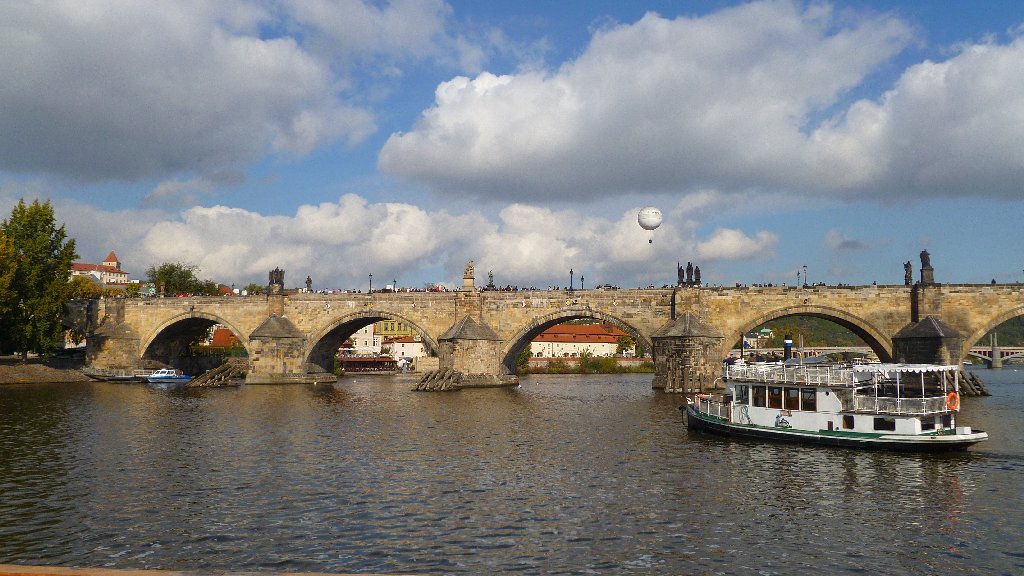
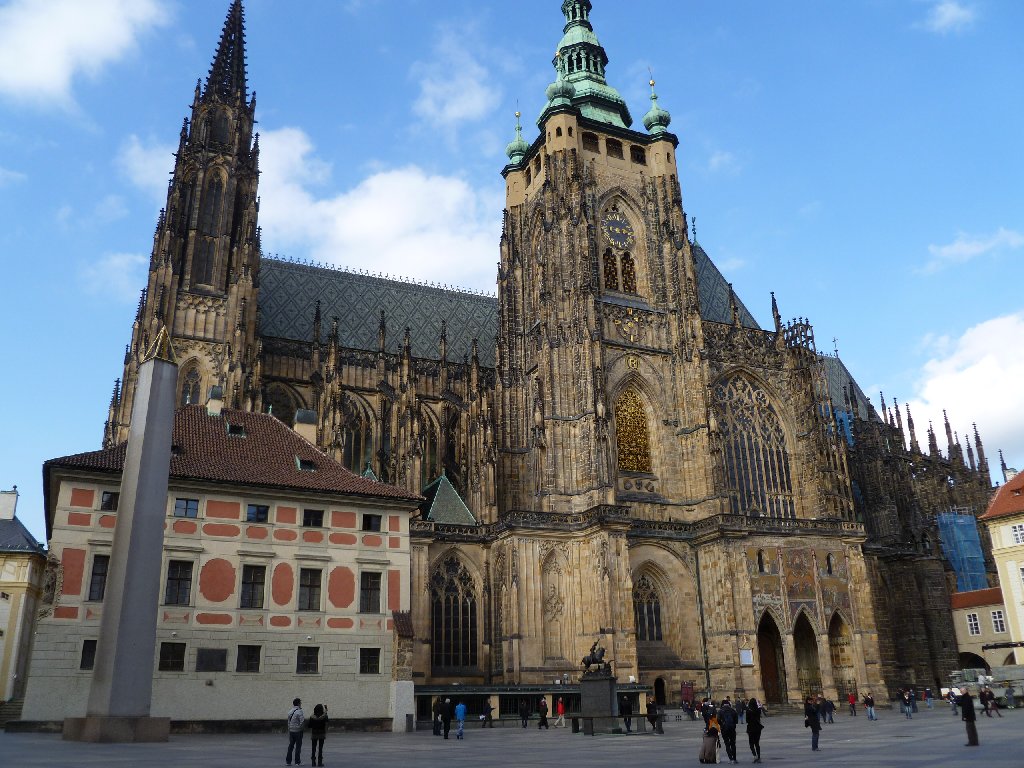 Charles Bridge and St Vitus Cathedral
Charles Bridge and St Vitus Cathedral
.jpg?timestamp=1355186591546)
Prague Castle
Friday 12 October. Prague to Munich, Germany.
We travelled the 'Castle Road' - 70 castles - through Bohemia, into Germany, and on to Munich, the capital of Bavaria. Bavaria is a free state within Germany with its own parliament. Munich is a city of 1.3 million and the home of Bavarian Motor Werke (BMW), and Siemens. The main industry is tourism. It was raining on out city drive but we saw the Bayern Munich soccer stadium, the BMW headquarters, the 72 Olympic stadium, the summer and winter royal palaces and gardens, the Lowenbrau brewery, the Greek column and temples of Kings Square, Karoline Square, Government buildings, the State Opera House, the gate to Marion square and the Victoria markets.
We were both a bit sick today and also had some drama when Ross's suitcase got broken and was replaced by the hotel after strong words by Tunde, our Tour Director.
Saturday 13 October. To Frankfurt.
We travelled the 'Romantic Road' through to Frankfurt. Along the way we stopped at the quaint medieval villages of Nordlingen and Rothenburg. There are thousands of these villages throughout the German countryside, complete with surrounding walls, gates, towers, central marketplace and a big church in the centre. They are pretty much unchanged from medieval times except that they are now filled with tourists.
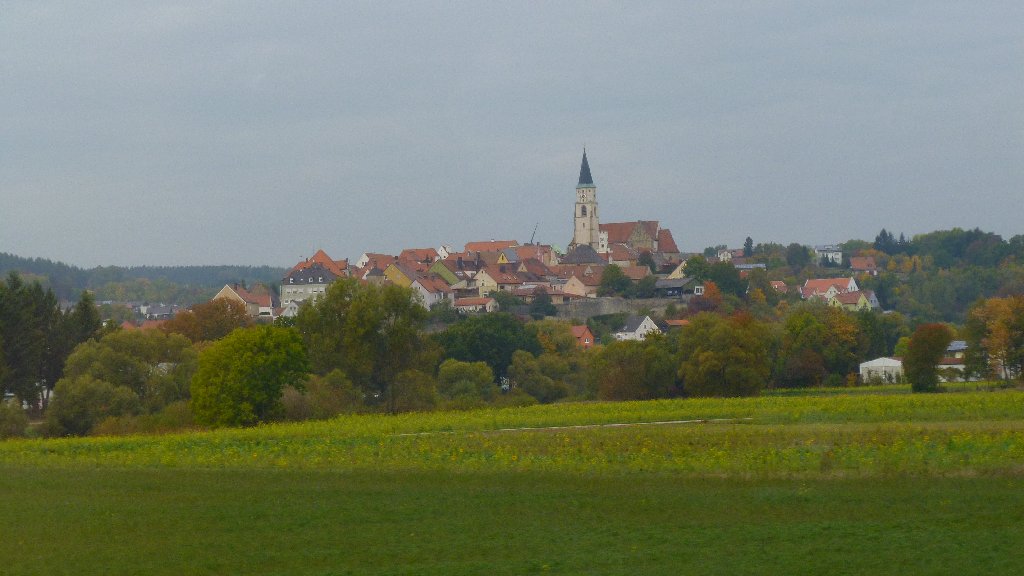
.jpg?timestamp=1355181491272)
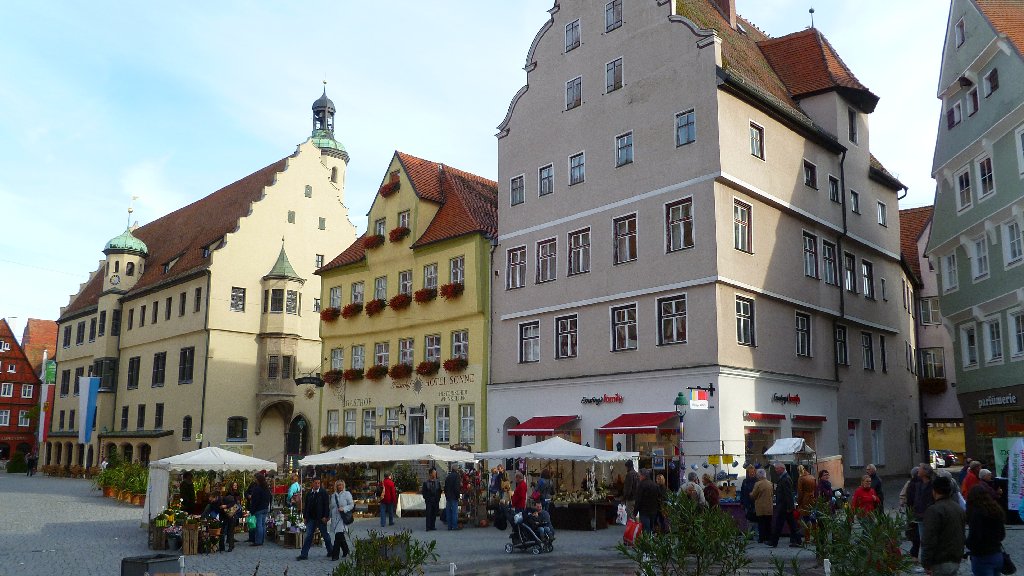
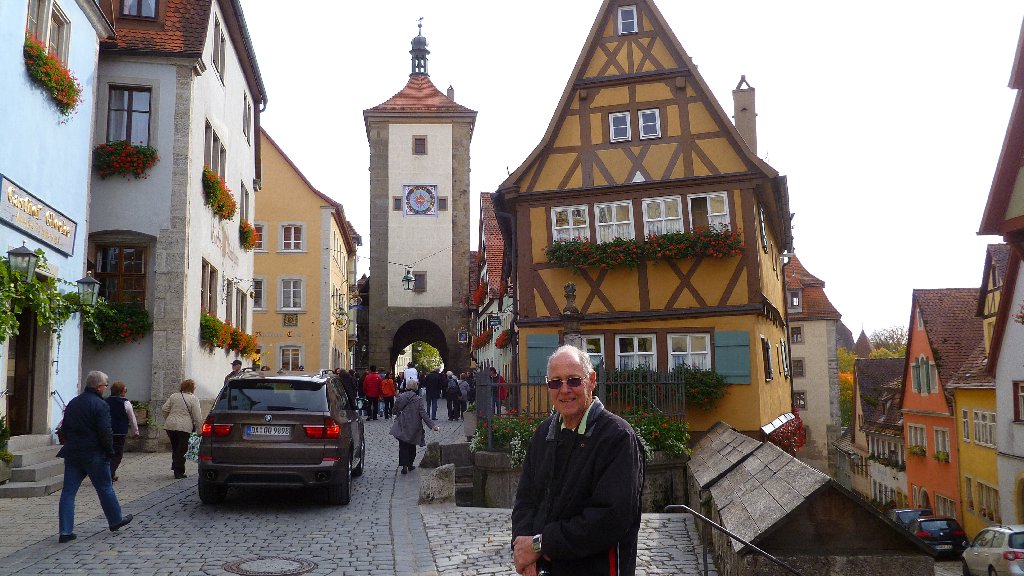
Quaint German country villages
Then it was on to Frankfurt and our final dinner together.
Our Cosmos tour of Central Europe was really excellent. Special highlights were
- An excellent Tour Director in Tunde and a pleasant group of travellers from UK, USA, Philippines, Singapore, Australia and New Zealand.
- Seeing the big cities of Berlin, Warsaw, Krakow, Budapest, Vienna and Prague, and many smaller towns and villages along the way.
- Learning about the history of this part of the world, especially about WW2 and the ensuing communism.
- Seeing first-hand the effect of the Nazi's on the Jews, especially at Auchswitz.
- Seeing many magnificent palaces, castles, and churches.
- Enjoying some of the culture of the various countries especially the food and music.
It was a privilege to visit Central Europe with Cosmos. We now have a much better understanding of this part of the world.
Click here to watch the video we made of our trip to Central Europe..